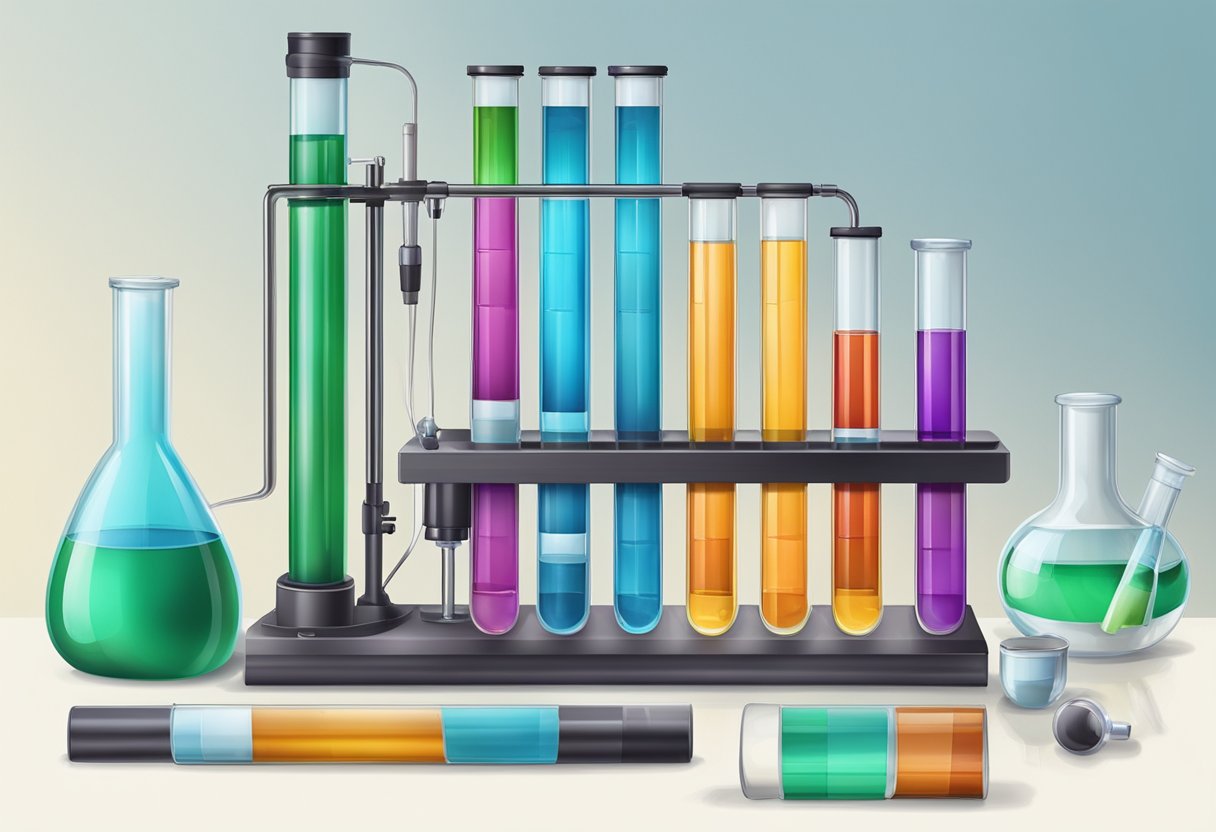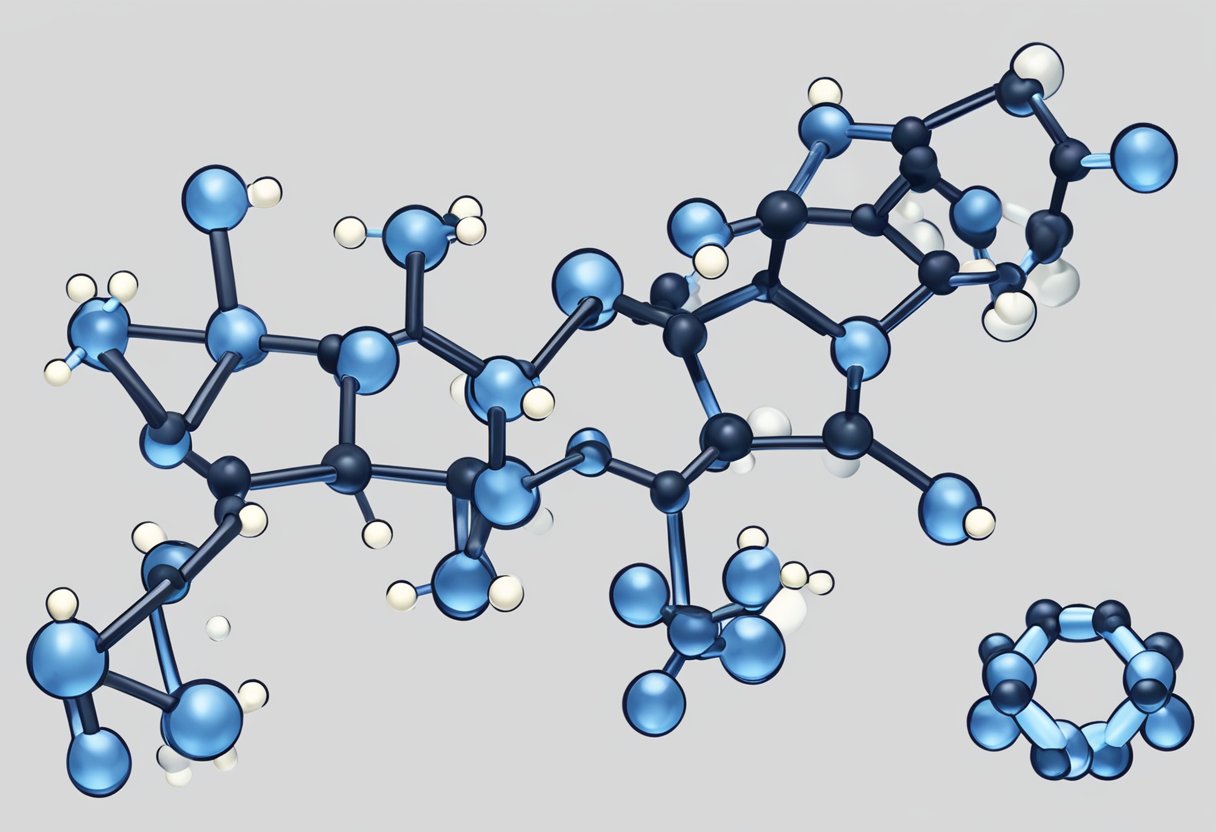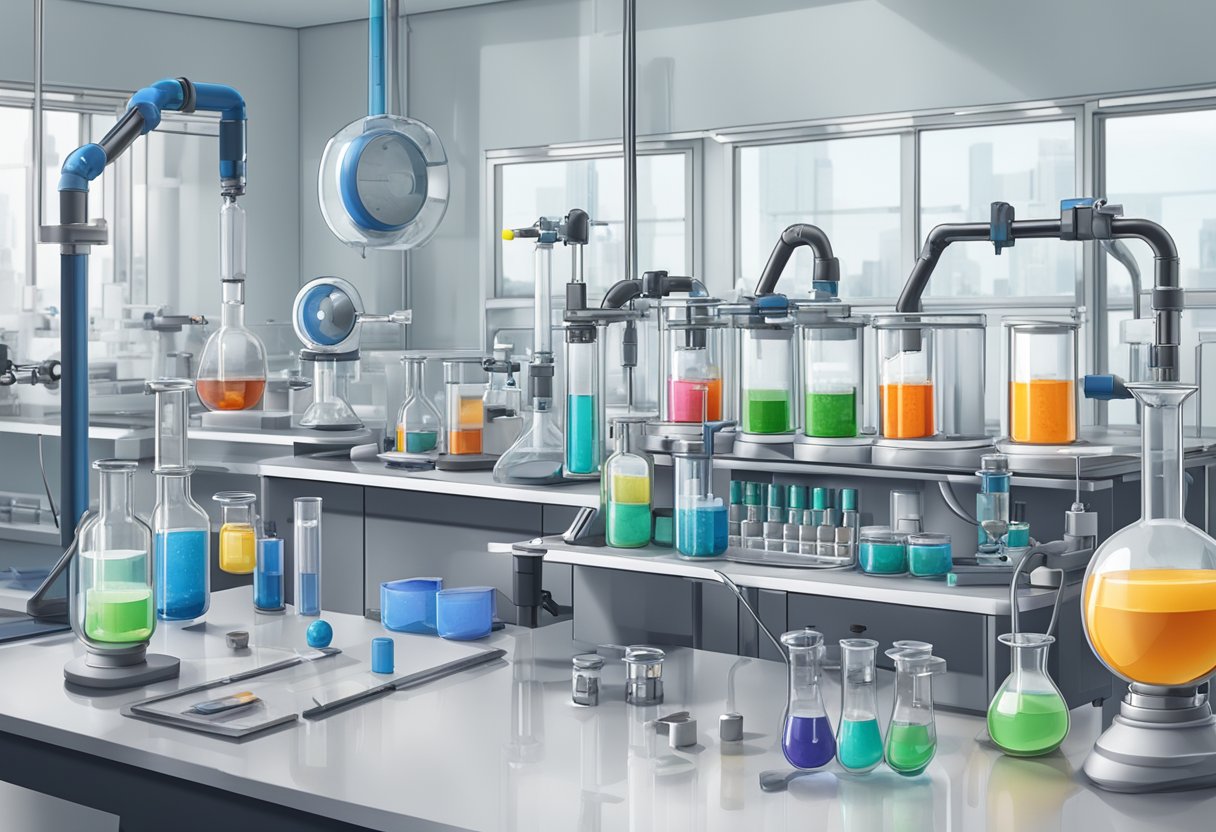Rubber Antioxidant 6PPD: Benefits and Usage
19/01/2024
Rubber antioxidant 6PPD is a chemical compound used in the production of rubber products to prevent degradation caused by exposure to oxygen, ozone, and other environmental factors. This compound is widely used in the tire industry due to its effectiveness in increasing the lifespan of rubber. In this article, we will explore the properties and applications of rubber antioxidant 6PPD.

Rubber products are subjected to various environmental factors that can cause degradation and reduce their lifespan. To prevent this, rubber manufacturers use antioxidants to protect the rubber from oxidation and other forms of degradation. Rubber antioxidant 6PPD is one such compound that has gained popularity due to its effectiveness in protecting rubber products from degradation caused by exposure to oxygen and ozone. Its ability to extend the lifespan of rubber products has made it a widely used compound in the tire industry.
In the following sections, we will delve deeper into the properties and applications of rubber antioxidant 6PPD. We will explore its chemical structure, physical properties, and how it works to protect rubber from degradation. We will also discuss its applications in the tire industry and other rubber product manufacturing industries.
Chemical Structure of 6PPD

Rubber antioxidant 6PPD (N-(1,3-dimethylbutyl)-N’-phenyl-p-phenylenediamine) is a widely used antioxidant in the rubber industry. It is a dark purple solid with a molecular weight of 268.4 g/mol and a melting point of 45-50°C.
The chemical structure of 6PPD consists of two phenyl rings and a p-phenylenediamine backbone. The two phenyl rings are attached to the backbone at the para positions, while the butyl group is attached to one of the amine groups. The chemical formula of 6PPD is C18H24N2.
The structure of 6PPD provides it with excellent antioxidant properties, as the two phenyl rings and the p-phenylenediamine backbone provide multiple sites for free radical scavenging. Additionally, the butyl group provides steric hindrance, which prevents the antioxidant from being easily oxidized itself.
Overall, the chemical structure of 6PPD plays a crucial role in its ability to protect rubber from degradation due to heat, oxygen, and other environmental factors.
Properties of 6PPD

Rubber antioxidant 6PPD, also known as N-(1,3-dimethylbutyl)-N’-phenyl-p-phenylenediamine, is a dark purple to black solid substance. It is soluble in gasoline, benzene, acetone, and toluene, but insoluble in water.
6PPD is widely used in the rubber industry as an antioxidant to prevent the degradation of rubber products caused by oxygen, heat, and ozone. It is effective in extending the service life of rubber products and improving their performance under harsh conditions.
In addition to its antioxidant properties, 6PPD also has anti-ozonant and antiflex cracking properties, making it an ideal additive for rubber products used in outdoor applications.
Studies have shown that 6PPD has low toxicity and is not harmful to human health or the environment when used in accordance with recommended guidelines. However, it is important to handle 6PPD with care and to avoid contact with skin and eyes.
Overall, the properties of 6PPD make it an important and valuable additive in the rubber industry, helping to improve the performance and longevity of rubber products.
Production Process
Rubber antioxidant 6PPD, also known as N-(1,3-dimethylbutyl)-N’-phenyl-p-phenylenediamine, is a widely used antioxidant in the rubber industry. The production process of 6PPD involves several steps.
First, aniline and isobutylene are reacted to form 4-aminodiphenylamine. This intermediate is then reacted with acetone to form N-(1,3-dimethylbutyl)-4-aminodiphenylamine. This compound is then reacted with nitrobenzene in the presence of iron to form N-(1,3-dimethylbutyl)-N’-phenyl-p-phenylenediamine.
The resulting product is then purified through a series of steps, including filtration, recrystallization, and drying. The final product is a dark brown powder with a melting point of 45-50°C.
Quality control is an important aspect of the production process. The purity and composition of the final product are carefully monitored to ensure that it meets industry standards. In addition, the production process is designed to minimize the formation of impurities and byproducts that could affect the performance of the antioxidant.
Overall, the production process of rubber antioxidant 6PPD is a complex and carefully controlled process that requires expertise and attention to detail. The resulting product is an important component in the production of high-quality rubber products.
Applications in Industry
Rubber antioxidant 6PPD is widely used in various industries due to its excellent performance in preventing the aging and cracking of rubber products. This section will explore the applications of 6PPD in the automotive and industrial rubber product industries.
Automotive
Rubber antioxidant 6PPD is commonly used in the automotive industry as an additive to tire rubber formulations. It helps to increase the service life of tires by preventing the degradation of rubber due to exposure to heat, ozone, and other environmental factors. The use of 6PPD in tire rubber formulations also improves the tire’s resistance to punctures and cuts, making it more durable.
Industrial Rubber Products
Rubber antioxidant 6PPD is also used in the production of various industrial rubber products, including hoses, belts, gaskets, and seals. It helps to improve the resistance of these products to heat, oxidation, and other environmental factors, thereby increasing their lifespan. 6PPD is particularly effective in applications where the rubber product is exposed to high temperatures, such as in engine compartments or industrial machinery.
In addition to its use as an additive in rubber formulations, 6PPD is also used as a processing aid in the rubber manufacturing process. It helps to improve the flow of rubber compounds during processing and reduces the risk of scorching, which can lead to defects in the finished product.
Overall, the use of rubber antioxidant 6PPD in various industries has proven to be highly effective in improving the performance and lifespan of rubber products. Its widespread use is a testament to its reliability and effectiveness in preventing the aging and cracking of rubber products.
Health and Safety Considerations
Exposure Risks
Rubber antioxidant 6PPD is a chemical compound that is widely used in the rubber industry. However, like many chemicals, it poses potential health and safety risks that must be taken into consideration. Exposure to 6PPD can occur through inhalation of dust or vapors, skin contact, or ingestion.
Studies have shown that exposure to 6PPD can cause skin irritation, eye irritation, and respiratory problems. Prolonged or repeated exposure may also increase the risk of developing cancer. Therefore, it is important to take appropriate precautions when working with 6PPD to minimize the risk of exposure.
Handling and Storage
When handling 6PPD, it is important to wear appropriate protective equipment, such as gloves, goggles, and a respirator. Skin contact should be avoided, and any spills should be cleaned up immediately using appropriate procedures.
Storage of 6PPD should be in a cool, dry, well-ventilated area, away from sources of ignition and incompatible materials. It should be stored in a tightly closed container, and should not be exposed to direct sunlight or heat.
In conclusion, while rubber antioxidant 6PPD is a valuable chemical in the rubber industry, it is important to take appropriate precautions when working with it to minimize the risk of exposure and potential health and safety risks.
Environmental Impact
Rubber antioxidant 6PPD can have both positive and negative environmental impacts. On one hand, it can help extend the lifespan of rubber products, reducing the need for frequent replacements and the resulting waste. However, the production and use of 6PPD can also have negative effects on the environment.
One potential issue is the release of harmful chemicals during the production process. The use of certain solvents and catalysts can lead to the emission of volatile organic compounds (VOCs), which can contribute to air pollution and have negative health effects on humans and wildlife.
In addition, the disposal of rubber products containing 6PPD can also be problematic. When these products are discarded in landfills, the antioxidant can leach out and contaminate soil and groundwater. This can have negative impacts on ecosystems and potentially harm wildlife.
To mitigate these environmental impacts, it is important to carefully manage the production and use of 6PPD. This can include implementing best practices for chemical handling and disposal, as well as exploring alternative, more environmentally friendly antioxidant options.
Regulatory Status
Global Regulations
Rubber antioxidant 6PPD is regulated globally due to its potential health and environmental impacts. The chemical is classified as a hazardous substance under the European Union’s Registration, Evaluation, Authorization and Restriction of Chemicals (REACH) regulation. REACH requires manufacturers and importers to register their substances and comply with specific safety measures to protect human health and the environment.
In the United States, the Environmental Protection Agency (EPA) regulates 6PPD under the Toxic Substances Control Act (TSCA). Under TSCA, manufacturers must provide information on the chemical’s potential hazards and comply with specific reporting requirements.
The chemical is also regulated in other countries, including China, Japan, and Canada, under similar regulations.
Compliance Standards
To ensure the safe use of rubber antioxidant 6PPD, various compliance standards have been established. For example, the European Chemicals Agency (ECHA) has set a maximum concentration limit of 0.1% for 6PPD in rubber products. Additionally, the American Chemical Society’s Committee on Environmental Improvement (ACS CEI) has developed a set of guidelines for the safe handling and disposal of the chemical.
Manufacturers and users of 6PPD must comply with these regulations and standards to ensure the safe use and disposal of the chemical. Failure to comply with these regulations can result in legal penalties and harm to human health and the environment.
Market Trends
Rubber antioxidant 6PPD is a widely used chemical in the rubber industry. The market for this antioxidant is expected to grow steadily in the coming years. The following are some of the market trends related to rubber antioxidant 6PPD.
- Increasing demand: The demand for rubber antioxidant 6PPD is increasing due to the growth of the automotive industry. The increasing production of vehicles is driving the demand for rubber products, which in turn is driving the demand for rubber antioxidant 6PPD.
- Growing awareness: The awareness about the benefits of using rubber antioxidant 6PPD is increasing among manufacturers. This is leading to the adoption of this chemical in various industries, including automotive, construction, and others.
- Technological advancements: The development of new technologies is driving the growth of the rubber antioxidant 6PPD market. The use of nanotechnology in the production of rubber antioxidant 6PPD is expected to increase the efficiency of the chemical and reduce its environmental impact.
- Regional growth: The market for rubber antioxidant 6PPD is expected to grow in regions such as Asia Pacific and North America due to the increasing demand for rubber products in these regions.
In conclusion, the market for rubber antioxidant 6PPD is expected to grow steadily in the coming years due to the increasing demand, growing awareness, technological advancements, and regional growth.
Technological Advancements
Rubber antioxidant 6PPD is a chemical compound that has been widely used in the rubber industry due to its ability to protect rubber from degradation caused by heat, oxygen, and ozone. Over the years, there have been several technological advancements in the production and application of 6PPD, which have improved its effectiveness and efficiency.
One of the technological advancements in the production of 6PPD is the use of new catalysts and solvents in the synthesis process. This has led to the production of high-quality 6PPD with improved thermal stability and antioxidant properties. The use of advanced analytical techniques such as gas chromatography and high-performance liquid chromatography has also enabled manufacturers to produce 6PPD with high purity and consistency.
In terms of application, there have been significant advancements in the use of 6PPD in rubber products. For instance, the use of nanotechnology has enabled the development of rubber products with improved mechanical properties, such as increased tensile strength and elongation at break. This has been achieved by incorporating 6PPD nanoparticles into the rubber matrix, which act as reinforcing agents.
Another advancement in the application of 6PPD is the development of new formulations that combine 6PPD with other antioxidants and processing aids. This has resulted in the production of rubber products with improved resistance to aging and weathering, as well as enhanced processing properties.
Overall, these technological advancements have contributed to the continued use and effectiveness of rubber antioxidant 6PPD in the rubber industry.
Challenges and Opportunities
Rubber antioxidant 6PPD faces both challenges and opportunities in the current market. On one hand, the increasing demand for eco-friendly products has put pressure on manufacturers to find alternatives to 6PPD. This is because 6PPD contains harmful chemicals that can have a negative impact on the environment. As a result, some countries have already started to phase out the use of 6PPD in tire production.
On the other hand, there are also opportunities for 6PPD in the market. This is because 6PPD is still a widely used antioxidant in the rubber industry due to its effectiveness in preventing the degradation of rubber. In addition, the growing demand for tires in emerging markets such as China and India provides a huge potential market for 6PPD.
To address the challenges facing 6PPD, manufacturers are exploring alternative antioxidant solutions that are more environmentally friendly. This includes the use of natural antioxidants such as phenolic compounds and flavonoids, which are derived from plants. However, these alternatives are still in the early stages of development and are not yet widely available.
Despite the challenges, the opportunities for 6PPD remain strong. Manufacturers can continue to improve the production process of 6PPD to minimize its impact on the environment. In addition, they can also explore new markets and applications for 6PPD beyond tire production.
Overall, the challenges and opportunities facing 6PPD highlight the need for continued innovation and development in the rubber industry. Manufacturers must balance the demand for effective antioxidants with the need for eco-friendly solutions to ensure the long-term sustainability of the industry.




